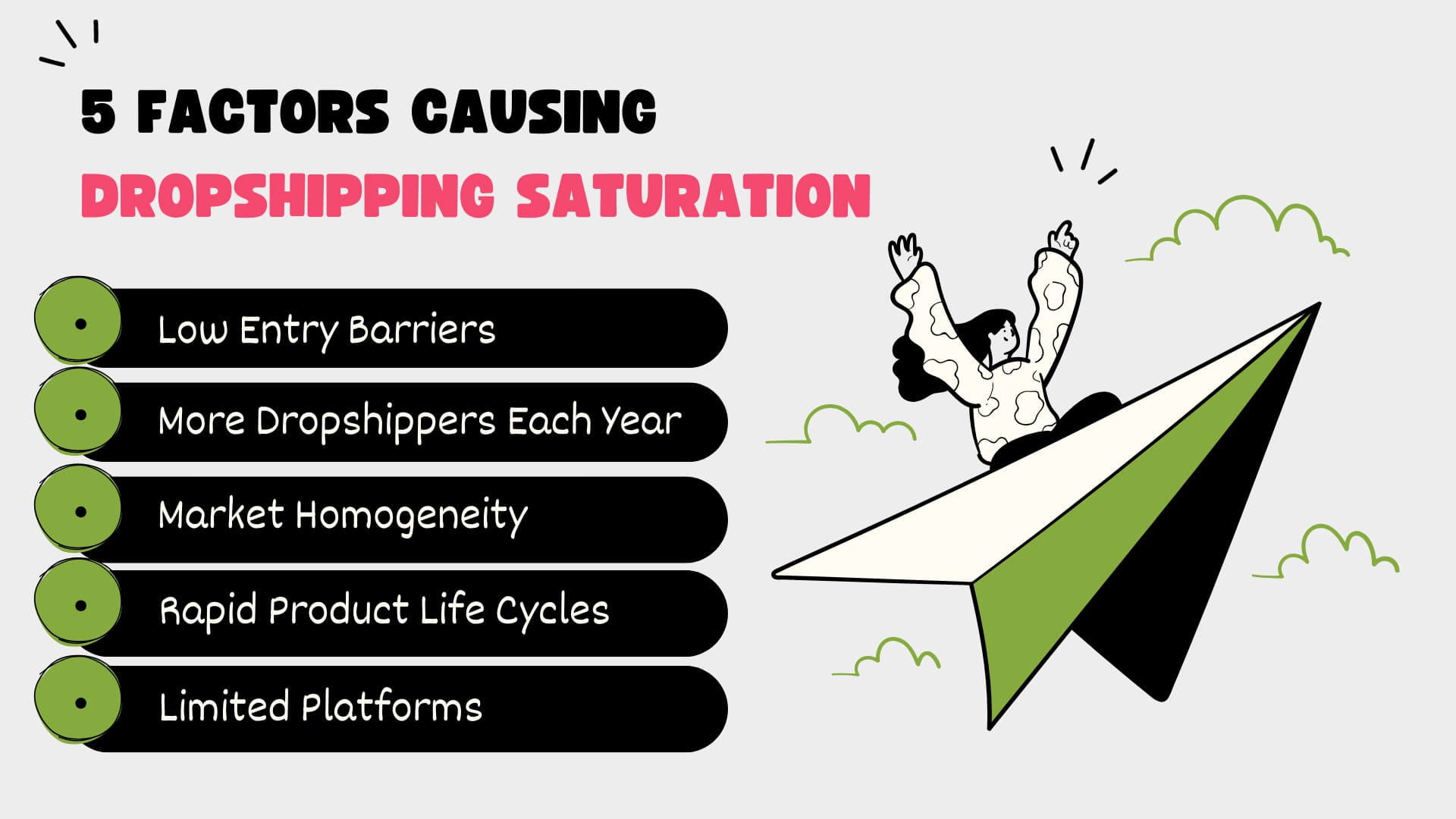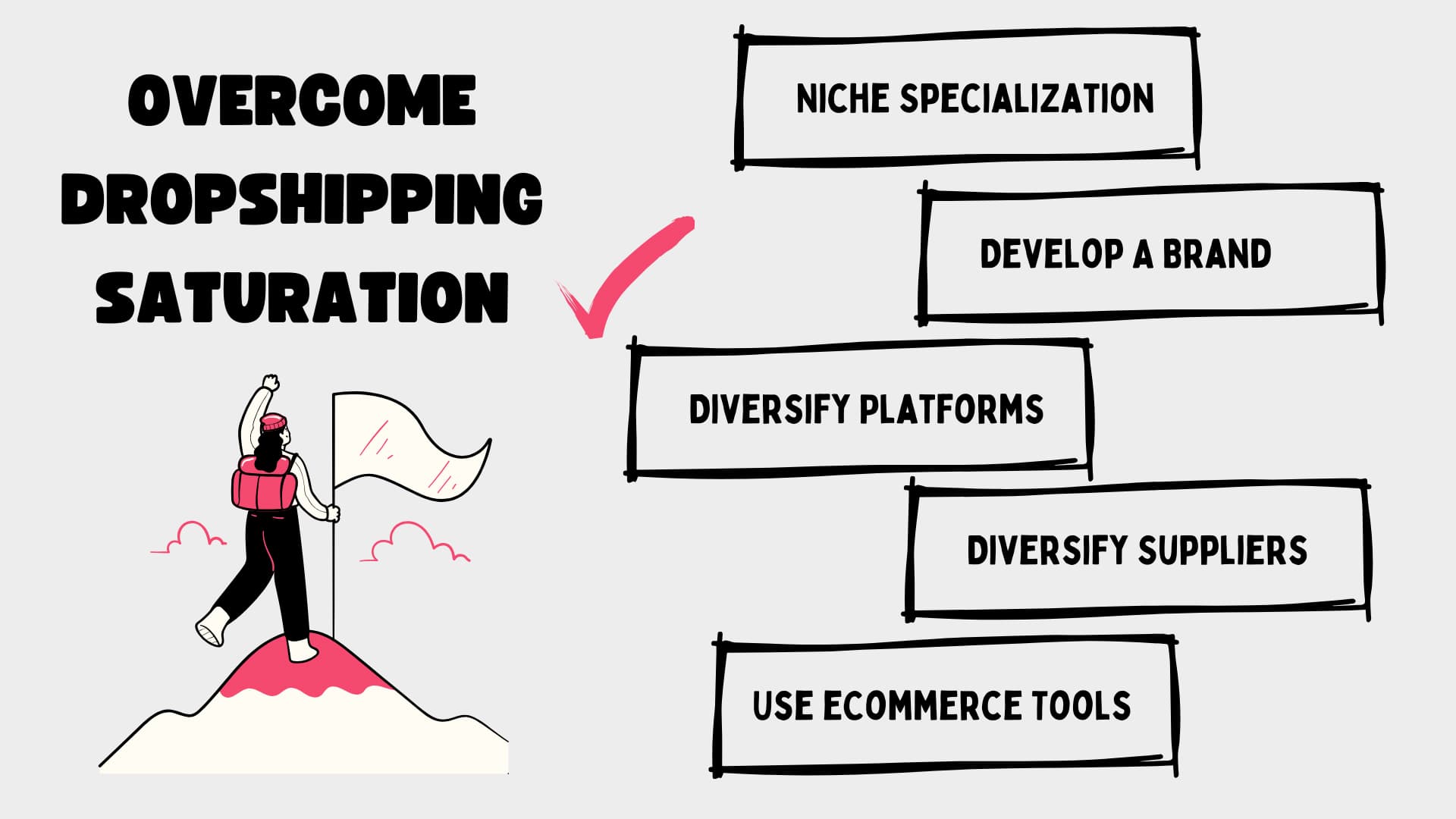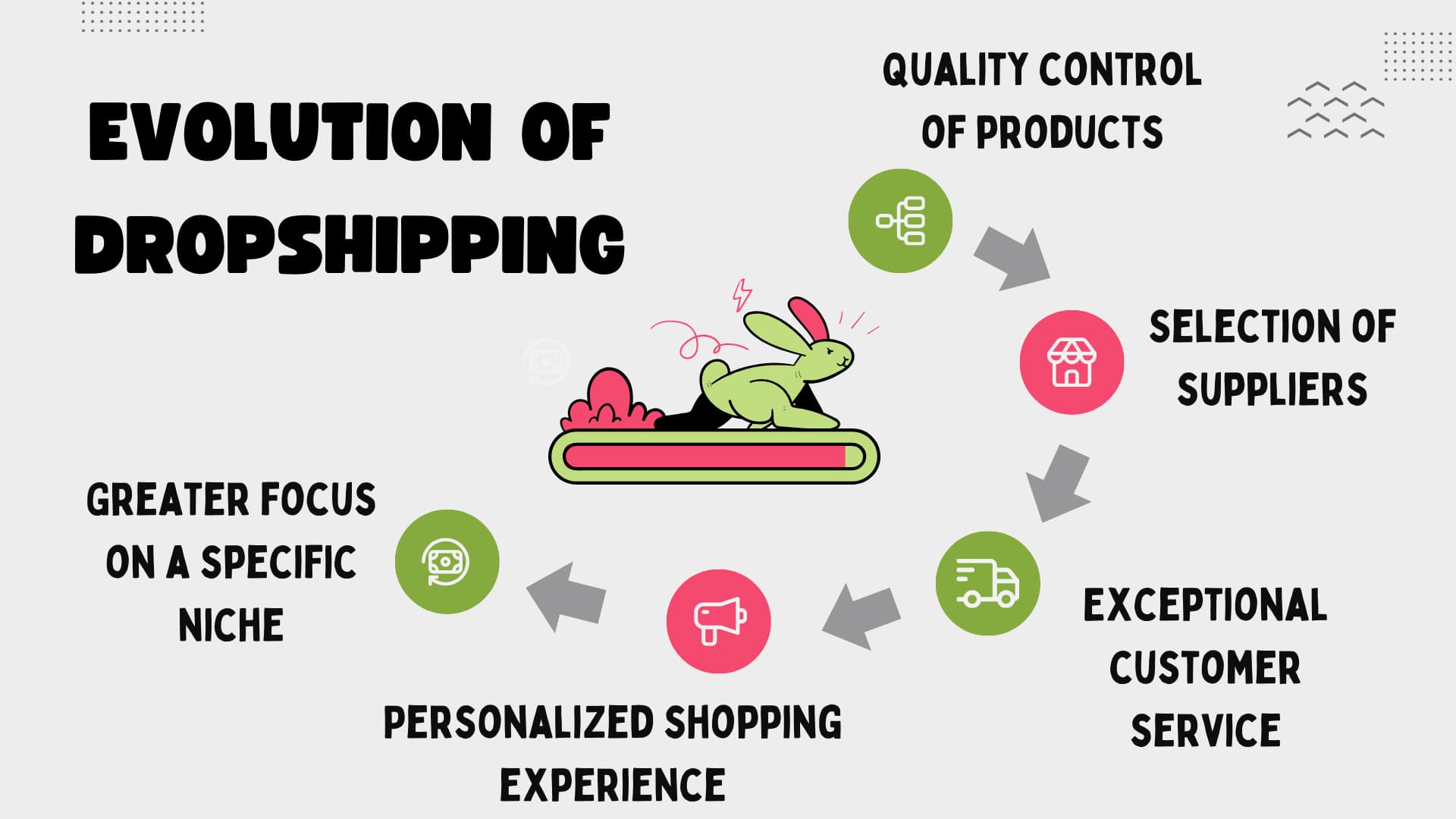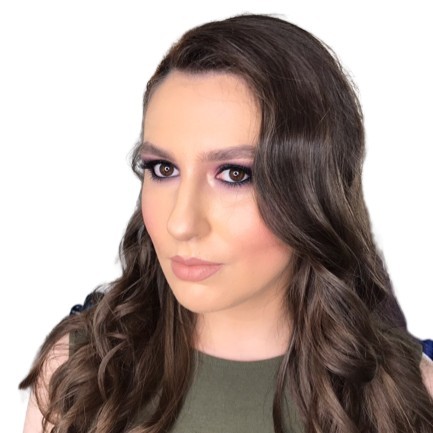Dropshipping has emerged as a leading business model for those trying to succeed in the online market. Many companies, from giant retailers to smaller independent entrepreneurs, have adopted it as a viable money-making option. The ease of entry means anyone can get into dropshipping, without a specialized business background, so the number of digital retailers is steadily rising.
But with so much competition, is drop shipping over-saturated, and is there still space for new sellers?
The answer is no, dropshipping is not saturated. While dropshipping as a business model is overused, the products themselves are the driving force to make sales and capture the interest of your target audience. With an estimated 289.91 million US e-commerce users by 2027, there is still an ocean of potential buyers to tap into, meaning dropshipping is still profitable with plenty of opportunity for new sellers.
With a steadily increasing audience, there is still plenty of opportunity to make a profit with dropshipping in 2024. In fact, by 2026, the total market revenue is expected to reach a record-breaking $476.1 billion and continue to grow from there.
In this article, we’ll explain market saturation, give you strategies on how to overcome it, and answer the question “Is dropshipping still worth it?” through detailed market analysis.
Understanding Market Saturation
A market becomes saturated when a certain product or service is so widely available that it supersedes its actual demand. The supply continues to increase while interest in the goods either levels out or declines, decreasing the opportunity for profit. The item is easily accessible to the public, so the sense of exclusivity is lost, resulting in lost potential and declining sales.
This can be easily seen with the fidget spinner craze that occurred around 2017 when these affordable toys flooded the market. Many online retailers jumped at this opportunity, but interest fizzled out, and making a profit on them became difficult. The same can be said with the pop-socket, which rose to popularity around 2014. It was a hot ticket item for a while, but the market became overcrowded, essentially killing any possibility to make a significant income.
These scenarios are especially true nowadays in dropshipping, where many sellers offer the same items, use identical generic marketing materials, and share the same wholesale suppliers. Potential buyers are bombarded with so many products that are almost indistinguishable from one another and so widely adopted that it’s increasingly hard to drum up excitement and a feeling of “must-have.”
The 5 Main Factors Causing Dropshipping Saturation
The dropshipping industry is experiencing rapid growth thanks to its unlimited earning potential. This means an increased number of customers, a greater level of competition, and the probability of over-saturation. To avoid this pitfall, digital merchants must be aware of the potential issues they might face and how to effectively overcome them.

Low Entry Barriers
Anyone can join the dropshipping landscape because the market entry barriers are very low. Participants don’t need any type of qualification, a marketing degree, or even previous experience. If you’re the resourceful type, starting a dropshipping business for free is possible.
You can use free market research tools like the Koala Inspector Chrome extension to discover emerging trends and winning products and leverage free dropshipping platforms to open a shop and start selling. All this can be done with zero or minimal upfront investment, meaning that any realized earnings are pure profit. This means the cost to start dropshipping is very low, leaving the doors wide open for anyone willing to seize the opportunity.
More Dropshippers Entering The Market Each Year
The rise of dropshipping has also led to the rapid success of digital providers that facilitate the process of hosting and running an e-commerce shop. The most popular platforms on the market are:
- Shopify – 2.1 million daily active users
- WooCommerce – Used by 6.5 million websites
- BigCommerce – Has 45,476 live stores
A standout amongst them is Shopify, and the current topic might make you question, “Is Shopify too saturated?” but the reality is that this provider is continuing to expand. According to reports, during the economic difficulties of 2020, this multinational company generated $12+ billion in revenue across the globe, and those figures are only going up. Currently, 1.75 million merchants use the platform as their primary retail venue, and collectively, they generate a monthly recurring revenue of $141 million.
But dropshipping isn’t limited to specialized seller platforms any longer. Social media has realized the training potential of this business model and has started to integrate e-shops into their functionalities. This is perfect for dropshippers because channels like Facebook, Instagram, and TikTok now have in-app shopping features that allow users to make direct purchases. That means sellers now have access to the same target audiences, increasing the competitiveness of the business.
Market Homogeneity
Another possible factor leading to product saturation is how homogeneous the current e-commerce landscape is. Many online merchants don’t want to take risks and opt to market fairly popular items and source them from the same suppliers. This leads to many e-shops having nearly identical inventories, with little to no variation in quality, design, or even the color of the items.
This trend is present in the most popular product niches on the market, which include:
- Electronics and gadgets
- Makeup and skin care
- Fitness and health
- Clothing and accessories
- Fashion and apparel
When consumers think they are sold the same items repeatedly, the desire to make a purchase decreases. As the demand for those products decreases, sellers have no choice but to lower their prices accordingly. Because so many retailers offer similar goods, they must collectively lower their pricing structure to stay competitive.
Rapid Product Life Cycles
At its core, dropshipping is reliant on popular trends and current crazes. The short life cycle of these fads contributes to rapid market saturation, as millions of merchants are trying to capitalize on the newest “IT” item. Thanks to social media marketing and the rise of influencers, some products can become oversaturated so quickly that they are no longer profitable to sell within a few weeks or even months.
Many Shopify retailers often turn to wholesale sites like Aliexpress and Alibaba to discover trendy items and populate their stores with inventory. They often look for affordable listings with zero or minimal shopping costs, disregarding quality and customer satisfaction. That negatively impacts the market, as it becomes flooded with the same cheap novelty items that consumers get tired of quickly.
Dependence on Limited Platforms
Platforms like Shopify make it easy for their users to launch an e-commerce store, so it’s no wonder that many hopeful entrepreneurs flock to these services. The affordable monthly plans and easy-to-use functionalities simplify the process of establishing your own online business, which means many digital traders rely on these platforms to host their domains.
As a result, certain niches on these platforms become crammed with stores carrying nearly identical merchandise. For instance, the most popular niche on Shopify is fashion, with 75.500 apparel stores currently operating. If all of them follow the same trends and have similar offerings, it’s hard for one venue to stand above the rest.
These platforms also depend on algorithms to determine product visibility and rankings. When a niche becomes oversaturated, the competition to be seen by as many buyers as possible increases. Potential clients get tired of browsing the same offerings repeatedly, leaving the site without buying.
5 Strategies to Overcome Dropshipping Saturation
The convenience and simplicity of dropshipping have made it a popular venture, allowing entrepreneurs to sell products without managing inventory and have almost no overhead costs. This type of business is here to stay, which is made clear by the increasing number of digital retailers and the millions of global users looking for online deals.
But is dropshipping saturated enough not to be profitable? Our experience with the e-commerce market leads us to believe that dropshipping is still an excellent way to make additional income and even build a career in merchandising. To unlock the full potential of dropshipping, you must be strategic with how you run your e-shop. Don’t blindly follow everyone else, and ensure you’re doing the most to stand out and add value to your offer.

Niche Specialization
Many dropshipping newbies think the best way to profit is to cast a wide net and offer as many products as possible. In reality, the exact opposite is true, and identifying a niche that is in demand and specializing in that area will make it easier to target a specific audience and build a loyal following.
Basic market research can help you identify the most profitable dropshipping categories, but a thorough analysis will pinpoint specific sub-niches that fill a gap in the market and have earning potential. Some of the benefits of offering a specialized niche selection are:
- Expertise and credibility – Building an e-commerce store around a particular niche and the sub-categories within that niche establishes you as an expert in that field and sets you apart from the generic dropshippers. Customers are more inclined to trust and give repeat business to someone knowledgeable and passionate about their products.
- Reduced competition – Niche specialization enables entrepreneurs to avoid the intense competition that comes with offering a broad range of products. By recognizing gaps in the market and narrowing your focus to fill that demand, you have fewer direct competitors, making it easier to come on top.
- Faster adaptability – By focusing on a niche area, you can closely follow market fluctuations and recognize emerging trends. That enables you to quickly adapt to any developments, introduce new products, and stay ahead of the competition.
Focus On Developing A Brand
Another factor that leads to oversaturation in the dropshipping sphere is the lack of differentiation and imagination. Many dropshippers offer the same goods, use the same promotional images, use similar marketing strategies, and don’t have a personalized look.
Create a consistent visual identity that reflects your brand’s personality through a unique selling point, customized logo, color palette, packaging, typography, and overall aesthetic. Incorporate and unify the brand’s voice across all selling platforms and marketing campaigns. A strong brand presence is the first step you need to make to attract loyal customers and build a sustainable business that stands the test of time.
Diversify Platforms
A common pitfall that dropshippers face is an overreliance on a single sales channel. Using only one platform often leads to stagnation, decreased reach, and missed opportunities to connect with other potential audience pools. Many business owners concentrate on one service like Shopify and fail to see the potential of diversifying their options.
Other worthwhile marketing and selling avenues worth focusing on are:
- Social media: With more than half the global population being on social media, there is no denying the potential range businesses can achieve with a smart marketing strategy. Many social media apps now incorporate e-shops and buy-now options, facilitating the purchasing process.
- Video sharing: Potential buyers are more likely to spend money on an item they see used in action. Leverage the functionalities of YouTube to create video demonstrations or hire influencers to review and recommend your products to an already established fan base.
- Email marketing: Encourage visitors to your e-store to subscribe to your newsletter, by offering special discounts, seasonal deals, coupon codes, and the chance to enter giveaways. Incorporate additional value by including informative and relevant content to drum up extra interest.
Diversify Suppliers
The main cause of saturation in the dropshipping market is the dependency on the same offshore suppliers. While websites like Alibaba make it easy to find interesting products, they also limit the selection, leading sellers to have very similar inventory.
To avoid blending in with the crows, try to avoid the most prominent wholesale retailers and seek alternative suppliers with higher-quality products that cannot be easily found. Visit trade shows, contact local manufacturers and businesses, and build long-term relationships. That way, you can also market your wares as locally produced and sourced.
Use eCommerce Tools
The search for untapped niches and rising trends can take significant time and effort if you do it manually. To overcome this challenge, you can leverage eCommerce resources that automate market analysis and trend tracking, enabling you to make data-based decisions.
With research tools like Koala Inspector, you can glean valuable information about your competitors’ operations that will help you stay a step ahead. Koala Inspector has a plethora of useful functionalities that allow users to:
- Take a peek at the inner workings of other Shopify stores
- Find winning items and growing trends
- Compare pricing structures and successful ad campaigns
- Discover new wholesalers and supply chains
Evolution Of Dropshipping

Dropshipping has existed as a viable business model for a long time. Starting from physical mailing catalogs and evolving into e-commerce thanks to the dot com boom of the ’90s, dropshipping has always been a resourceful way to generate additional income. With the widespread use of the Internet and online shopping, the prevalence of dropshipping is expected to increase.
Currently, 23% of all online orders are fulfilled using dropshipping, and the industry as a whole will reach a compound annual growth rate (CAGR) of 23.4% by 2030. The low investment requirements and the almost non-existent need for inventory management make it an increasingly attractive option for entrepreneurs.
The main draw of this model for consumers is the convenience of buying affordable novelty products not available in traditional retail stores. But dropshipping is evolving and now closely follows current trends in fashion, beauty, technology, sustainability, etc. This shift can also be attributed to social media, which has proven to be an effective marketing and selling resource. A product going “viral” on TikTok or Instagram affects market demand and potential profit.
But, the attitude towards dropshipping is changing again, and customer’s expectations are rising. It’s not enough to have a colorful selection of affordable trinkets – you have to consider the wants and needs of the market. Shoppers demand high-quality products, swift and reliable delivery, and a hassle-free experience, whether they purchase from a traditional brick-and-mortar store or an online dropshipping business.
To meet these heightened demands, digital retailers must adopt a comprehensive approach that entails:
- Quality control of products – Quality has become a top priority for many consumers, and they expect to receive the best possible items when placing an order. While as dropshippers you don’t physically handle the products they sell, the responsibility of ensuring product integrity and consistency is still on your shoulders. Order a test batch before adding something to your selection to ensure acceptable quality.
- Careful selection of suppliers – The selection of reliable and trustworthy suppliers is the cornerstone of a successful dropshipping business. You must meticulously vet potential suppliers to ensure they consistently deliver high-quality products that meet or exceed customer expectations. They have to be willing to maintain open communication and accept your ideas for improvement.
- Exceptional customer service – In today’s e-commerce climate, you’re more than just a middleman between the customer and the supplier. You need to establish professional rapport with your client base, carefully consider their issues, and offer prompt assistance. Also, regularly update them on their order status, shipping delays, or any other relevant information to prevent frustration.
- A personalized shopping experience – Remove the impersonal aspect of dropshipping, by customizing your storefront and developing a distinctive brand. Carefully research your customer base and launch marketing messages and product promotions that appeal to a specific demographic. Incorporate tools that make shopping suggestions based on previous browser activity and purchasing history.
- Greater focus on a specific niche – Concentrate your focus on a specific lifestyle, ideology, hobby, or interest, and try to specialize in that area. When you delve deeper into a specific niche, you’ll be surprised by the available sub-categories you can incorporate. That focus will ensure you’re seen as an authority on the topic and bring in repeat business.
Future Trends In Dropshipping
The landscape of dropshipping is going through another evolution. Younger generations are increasingly concerned with climate issues and the ethics of large-scale manufacturing, influencing how they participate in the market. Initially, consumers were only interested in the convenience and speed with which they could procure products, but now they are more aware of industry practices and are concerned with topics like:
- Local and Regional Focus: Consumers are stepping away from the fast pace of cheap manufacturing and are willing to invest more in locally produced or sourced products that bolster the regional economy. Dropshippers must consider that shift as an opportunity to partner with local suppliers and offer a curated selection of products from a specific region. That aligns with the values of the target audience but also potentially reduces shipping times and costs, leading to a more favorable customer experience.
- Sustainability and Ethical Practices: Sustainability and the treatment of workers rank high in the public consciousness and are actively influencing its purchasing choices. Dropshippers can cater to these demands by procuring products from suppliers that put an effort into minimizing their environmental impact and are transparent with their labor practices and treatment of workers.
- Digital Products: Digital dropshipping is on the rise and is expected to make up as much as 26% of all online purchases by 2026. Dropshipping digital products allows you to sell anything in digital form, from software to ebooks and music.
Another developing trend in the e-commerce industry is the rapid advancement of AI and all the possible applications of this technology. The increased use of AI and automation can help you identify trending products, optimize product listings, create advertisements, and personalize the customer experience. It can streamline time-consuming tasks such as order processing and inventory management, freeing you to focus on more strategic business areas.
Wrapping Up: Is Dropshipping still worth it in 2024?
So, is drop shipping still profitable as a business venture in 2024? While the industry is experiencing oversaturation, there are still ways that savvy entrepreneurs can carve themselves a lucrative path to success. By embracing innovation, prioritizing quality, and focusing on niche-specific strategies, drop shippers can thrive in this competitive market and achieve sustainable success in the years to come.
And there are many emerging trends in dropshipping, you just need to be quick to act. One of these trends in 2024 is reverse dropshipping, which involves finding goods from evolved countries like the United States and selling them to Asian countries where these goods are in high demand but low supply.
Even just with the example above, if you’re willing to embrace progress and innovation and quickly adapt to the ever-changing e-commerce landscape, there will always be a way to make a profit with dropshipping.








